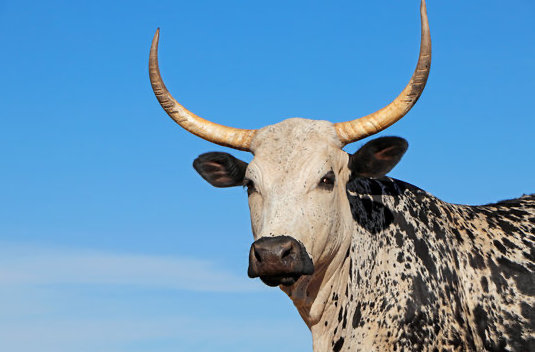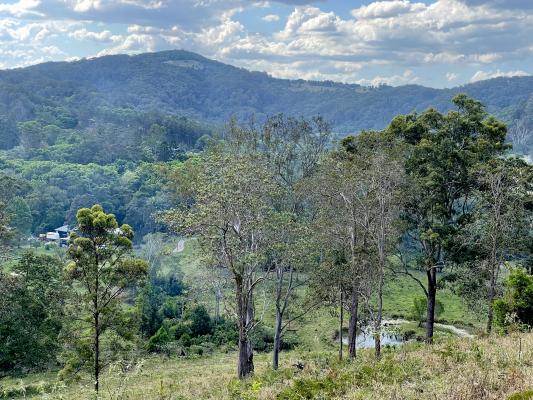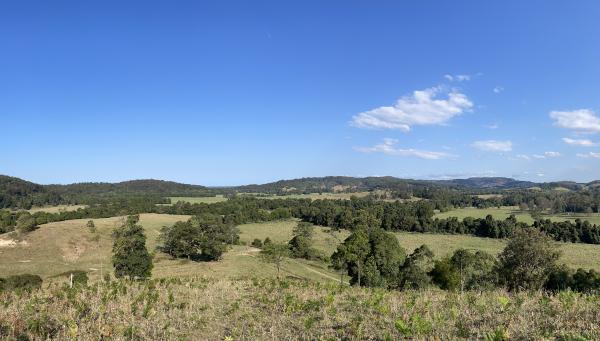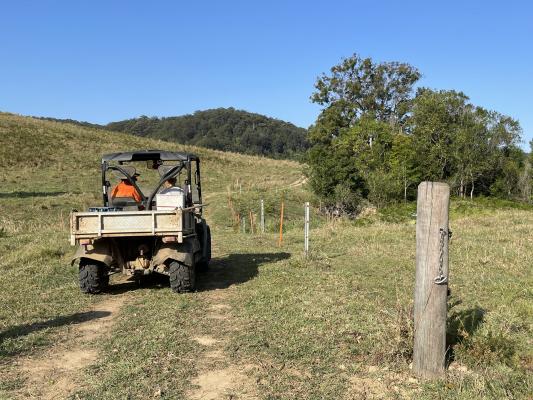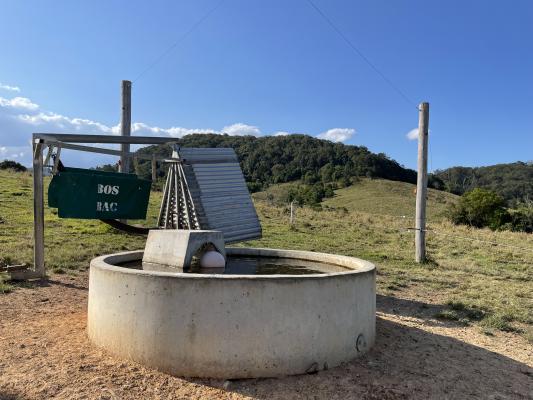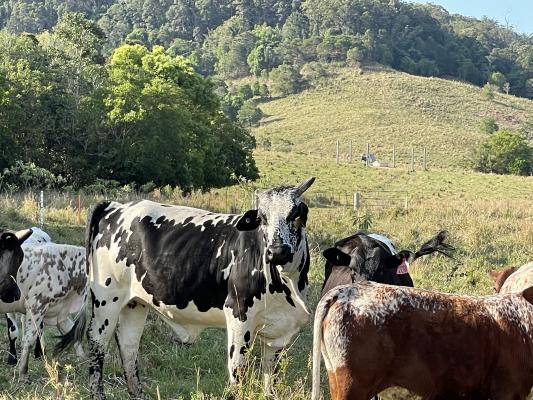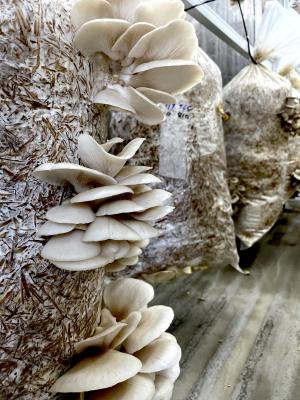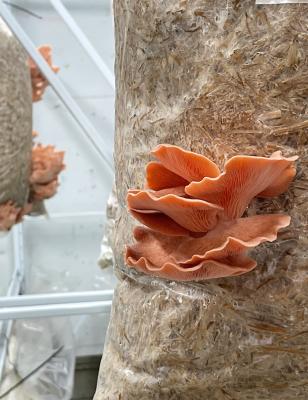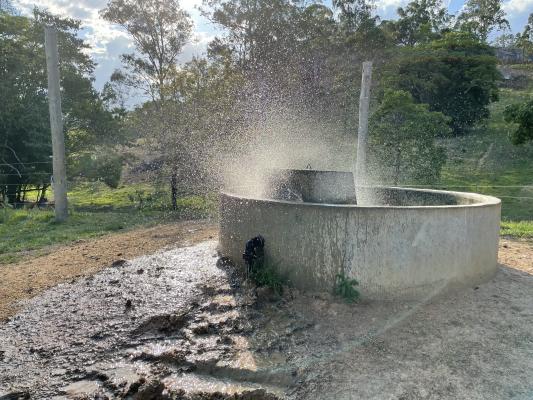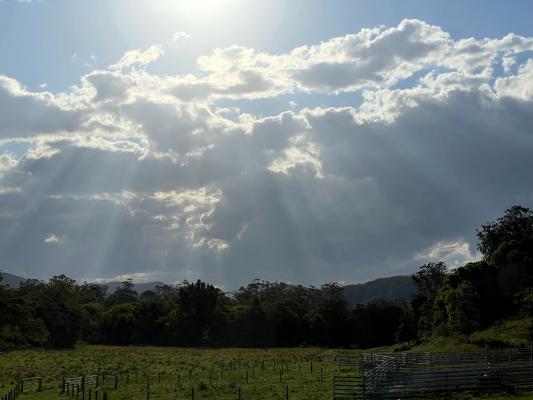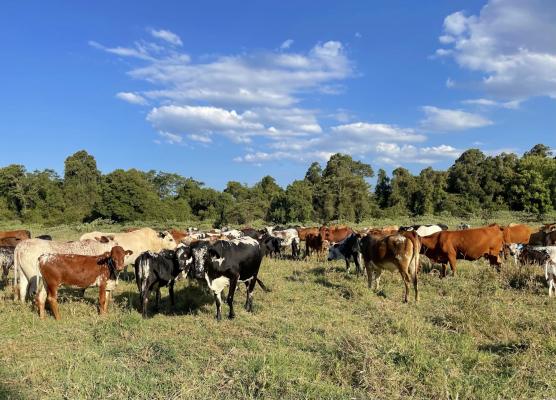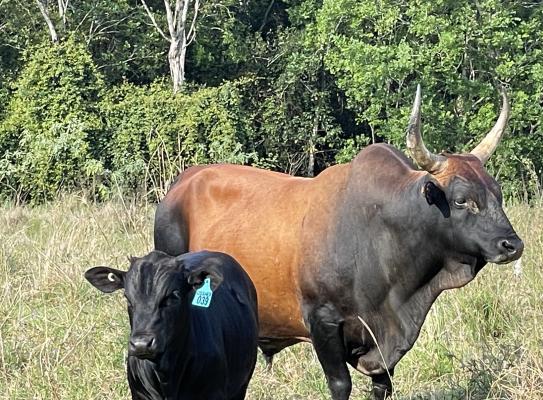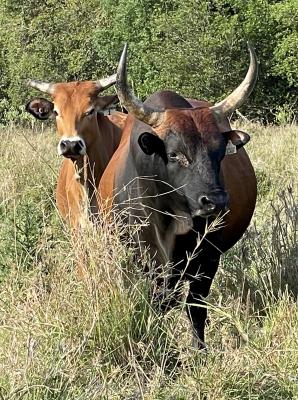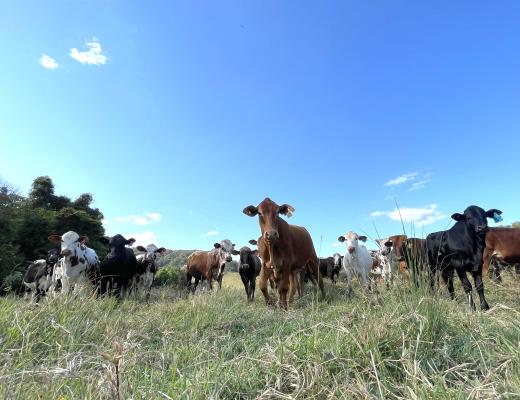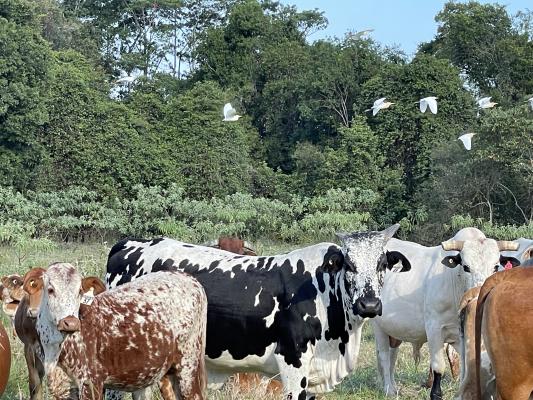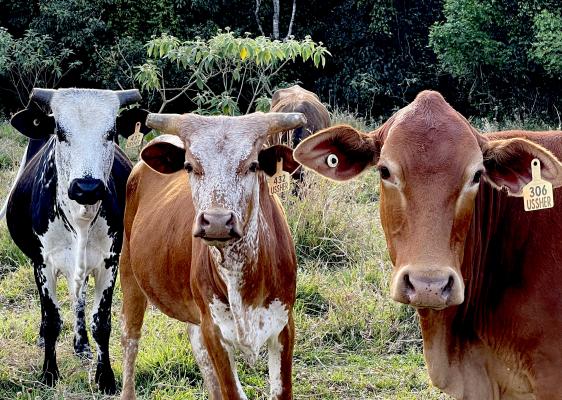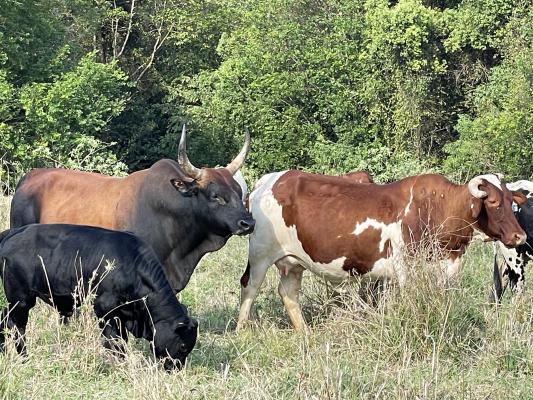The Ussher family have turned to Africa as part of their plan to revive their Kin Kin property with chemical-free grazing and mushroom farming, as ERLE LEVEY reports.
“We want the animals to enjoy their life on the farm while we do the same alongside them, and thus love having cattle which bring calm to the property.’’
It was like being in Africa. The lush grass, the treed backdrop, the thunder clouds looming in the north-west over the range.
In front of us were cattle of many colours. Some looked like zebras with their black and white markings. Others had distinctive red markings.
Then there was the dominant shape of the long-horned bulls.
Strong. Exotic. Revered.
Graceful white birds rose and flew off, silhouetted against the green of the foliage along the creek.
It was almost as if you expected to see Robert Redford and Meryl Streep having a picnic under one of the age-old Moreton Bay fig trees.
A scene from Out of Africa.
It was not hard to picture a Zulu or Masai warrior standing there on one leg, the other balanced against his knee and using a spear as his support.
Standing, watching the herd of cattle grazing.
I was with Bryant and Susie Ussher at their Kin Kin property, Eastwell Farms.
It’s an undulating chemical-free property of 400 acres that has been through a number of incarnations since Kin Kin was first settled in the mid 1800s.
Bryant’s parents Arland and Annette moved to Moran Group Rd from Longreach in 1969, changing the property from dairying to beef cattle.
There was small cropping in the valley as well as plantation timber – tea was even being grown.
Part of the reason for the move was to provide better education for their children, rather than having to rely on the distance learning.
That eventually led to Bryant attending Gatton Agricultural College and gaining two associate diploma courses – in Agriculture and Animal Husbandry.
Today, Susie, son Alex, and Bryant each share a passion for preserving the earth and working with nature, not against it.
They understand the necessity for a holistic approach to agriculture and practice with the future in mind.
In doing so they have been the latest to be awarded the Snail of Approval by Slow Food Noosa for ethically-minded produce.
They are doing it by introducing a new breed of cattle to Australia, but one that has been on the African landscape for many years and developed a natural resistance to ticks and disease.
Bryant discovered the South African breed Nguni were better suited to the tick-prone environment of the Sunshine Coast. Highly praised for its fertility, the breed also provides a natural resistance to other diseases.
Nguni were introduced to Eastwell in 2019, and are gradually occupying more of the farm’s herd each year.
Genetic benefits aside, these cattle are an inherently docile breed – something which is valued dearly, Bryant said.
“We want the animals to enjoy their life on the farm while we do the same alongside them, and thus love having cattle which bring calm to the property.’’
The “Eastwell” name has a deep history in the family, originating from Ireland.
There were two dairy farms, Bryant said. The back farm would bring the cream to the road on a sled. There was no power, no running water.
Arland made great efforts to shifting the property to beef. He adopted a pasture improvement program with the intention of ensuring the land could provide produce for more than the short term. New plant species were introduced to improve biodiversity.
Arland brought Santa Gertrudis in but they didn’t do well.
Instead, he became one of earliest farmers to introduce Brahmans to the area.
It was about the same time as Spring Valley Brahmans were being bred at Gympie.
This had followed the discovery of the susceptibility to ticks of British breeds. The switch to Brahmans eliminated the need to spray the animals with tick-resistant chemicals.
Through maintaining ecological balance and genuine care for the environment, Eastwell has flourished over many decades of farming, and was set to provide a healthy and happy basis for the family’s second generation of farmers.
After graduating from Ag College, Bryant managed properties at Chinchilla.
They were living in Toowoomba where Susie was working in education.
Bryant became a board member of Resources Consulting Services (RCS) – holistically-integrated education, training and advisory services to the agricultural sector, both nationally and internationally.
RCS works with individuals, families, corporates and government groups, helping them to grow productive, profitable agricultural businesses within regenerative landscapes.
“It allows us to work on our business in a board structure,’’ Bryant said.
“We developed the farms into cells for time-controlled grazing, and I saw the benefits really quickly.
“I was convinced the same approach could be used here.’’
After years of preparation, Bryant and Susie officially took over the family farm in 2018.
Their sights were set on improving soil quality through carbon sequestering, making great sacrifices to achieve such.
Quite simply, they came, saw what was needed to be done, and evaluated.
With these short-, mid-, and long-term gauges of success in place, the journey began with the gradual implementation of infrastructure to support rotational grazing.
“We have put a lot of money into infrastructure in a short space of time,’’ Bryant said, “but the benefits came extremely quickly.
“We set a priority list of things needing to be done. Water, fencing, yards.
“Pastures come from being able to manage the animals.
“We can see some serious movement in pasture health by being able to manage the animals on the grass.
“When you can allow plants to grow to good second stage growth and not be chewed – they look fabulous.’’
This meant the need for the 400-acre property to be divided into more than 40 paddocks, each with access to plumbed troughs.
By installing troughs shared between paddocks, cattle would be less likely to disturb natural water systems. This is of great concern, as the Kin Kin Creek flows through the property.
Ensuring a constant water flow means the cattle would be less stressed. They would not feel the water could run out on them which causes aggressive behaviour.
A system of six-way paddocks meant one trough could serve six paddocks.
All had electrified fencing with aluminium posts and plastic droppers.
A Bos bag fly treatment and detergent back rub were installed near the troughs, along with a supplement trailer.
The idea is for cattle to move paddocks daily, meaning there is no over-grazing and ground cover can flourish.
Developing the infrastructure was initially a steady process, but Bryant managed to wrangle the assistance of younger members of the family to speed things along.
Fencing and yard construction was completed two years in advance of the initial target, allowing for other goals to be pursued.
New yards were started in 2020 with the thought of handling 400 head, Bryant said.
“We started a herd with whatever breeds we could. Most of it was out of necessity.
“The cattle go through the race monthly so we can keep an eye on what they are doing.
“They are weighed for growth rates. Reporting will show if there’s an issue.
“It’s been pretty full-on. The old yards were near the creek to make it easy for the dip.
“We moved them back to higher ground so they would not be as boggy.
“Susie was on board very quickly as to the business value of the investment.
“Dad said he had poured 100 ton of gravel as foundations for the old yards … but they were still boggy.’’
The Nguni cattle have their heritage in the tribes from Africa.
Their colouring indicates the different tribal background.
They came into Australia from a small gene pool.
At Kin Kin they are mixed with Droughtmaster, Brahman and some Brangus as well.
“Crossing only with Nguni bulls we hope to have a high Nguni content cow to cross back to beef breeds if needed.
“They make exceptionally good mothers, – highly fertile, placid, and with a lovely temperament.
“They are very inquisitive … they come up to the buggy and all want to say ’good day.’
“They have good traits, including the reputation of being the most productive beef breed in the world.
“They are highly fertile – up to 20 years – come into calf early, mature early and go longer than most.
“Most breeds can be docile if treated right but these are intelligent. They know what’s going on.
“They would have been shepherded everywhere, corralled at night to keep them safe from lions.
“Each have their own personalities.
“They are a bit of a smaller animal. On this sort of coastal and hilly country, big cattle struggle.’’
After years of interest, developments started in late 2020 on the infrastructure to support gourmet mushroom farming. The farm was set to become multi-industry.
The world of fungi had perked Susie’s interest so four shipping containers were set and repurposed on-site.
Two plumbed, wired and lit 20-foot storage containers, as well as two 40-foot containers which house automated temperature control, humidity and oxygen regulation, and routine light-cycling capability.
The layout of these containers was carefully devised following many consultations with cultivation experts.
Early 2021 saw the harvest of the farm’s first oyster mushroom crop. After months of fine-tuning and process development, Eastwell was ready to host a gourmet mushroom farm with publicly available produce.
August 2021 saw the farm putting product to market.
“We are at about half the production we think we can manage,’’ Bryant said.
They sell at Noosa Farmers Market as well as provide to wholesalers and restaurants in Noosa, Organika in Noosa and Kandanga Farm Shop.
This week sees the start of the beef products also going to the market.
The meat will be processed in Gympie and then the Mary Valley.
Drop-off points will be arranged from the Sunshine Coast to Gympie as well as their stall at Noosa Farmers Market.
“It’s a good-tasting beef,’’ Bryant said. “We think it will make for a better sized cut.
“There has been quite a lot of interest.
“It will be a boxed selection of cuts.
“There is interest from restaurants already because it’s grass fed.
“Noosa has the name … you can have it on a table from Melbourne to Mackay.’’
On the way back from looking at the cattle Bryant told me a bit more about his father.
Along with then neighbour and later Noosa shire councillor Tos Barnett and Chris Chapman, Arland used to own the old Kin Kin Butter Factory that was right in the centre of town.
It was a creative arts centre and incubator of local talent. But it had to be demolished after a mini tornado ripped through the town in the mid 1980s.
I remember following council heavy equipment out that was clearing the road of fallen trees.
The butter factory was badly damaged so the three men donated the land to the people of Kin Kin for community purposes and has been transformed into Central Park.
So, what a day it turned out for me.
Not only reliving those roaring days of Kin Kin but being able to help out in the paddocks, then get a ride back on the tractor to the homestead.
It took me back years.

